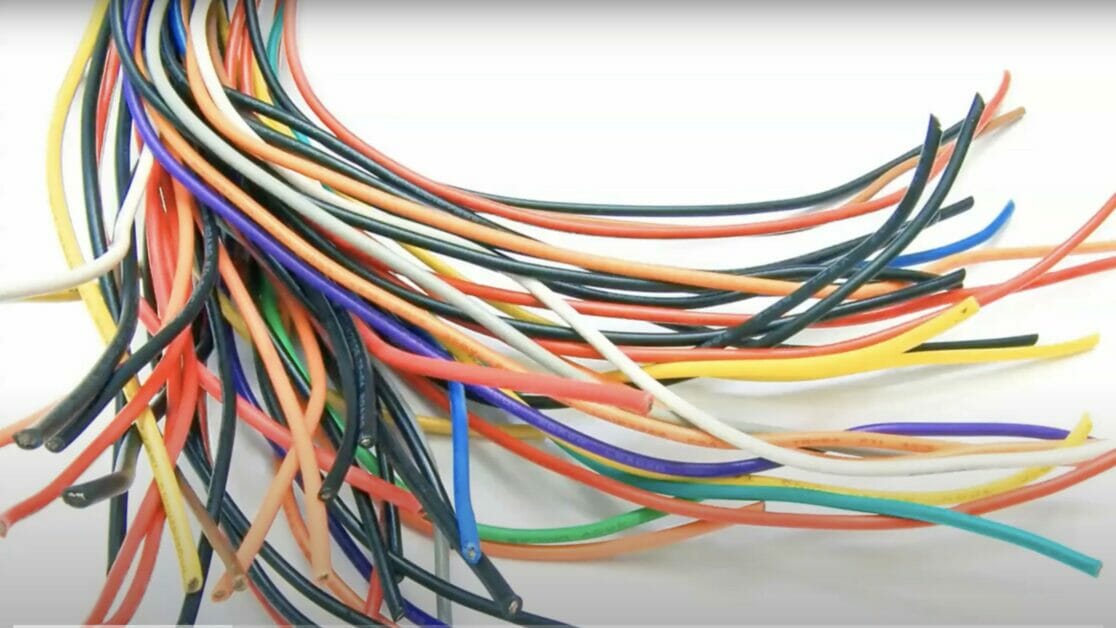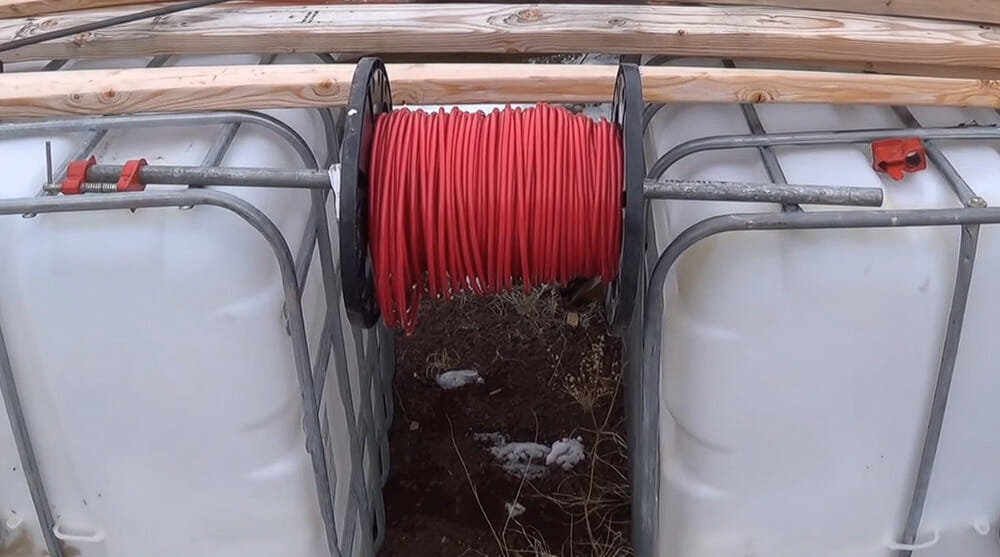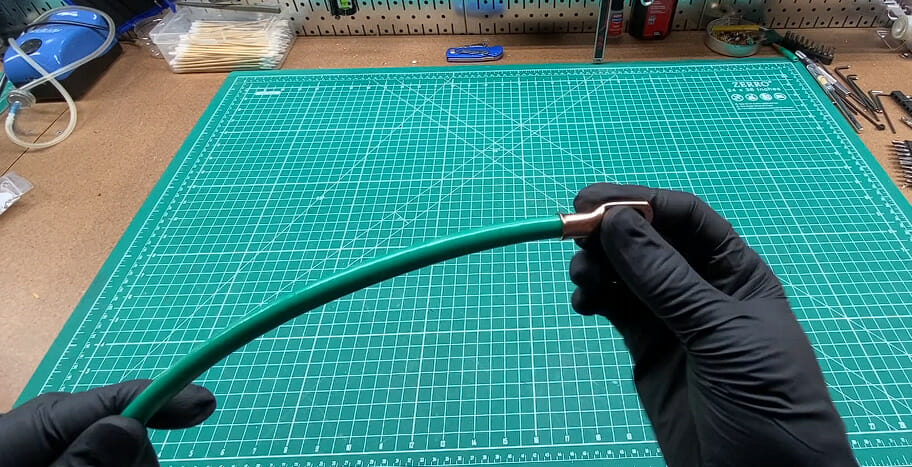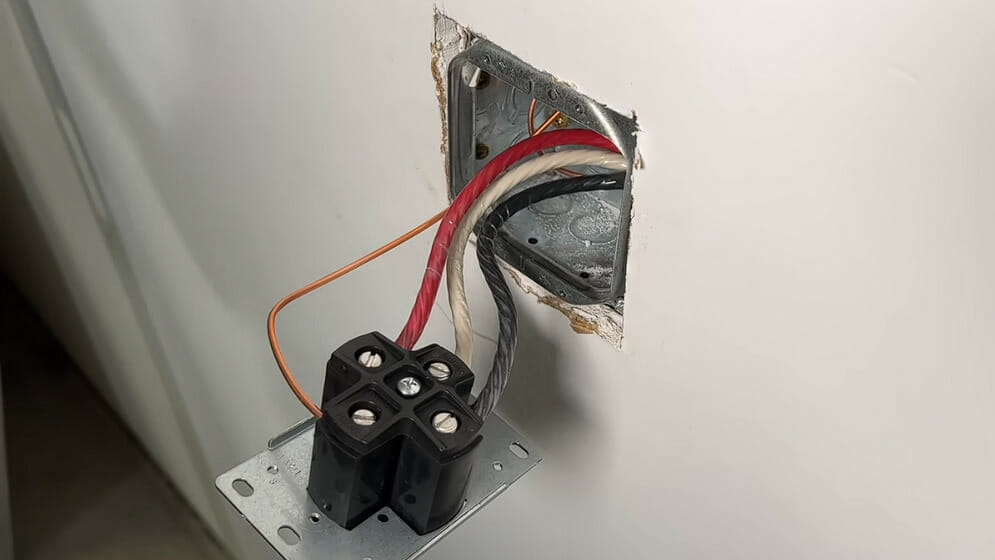What Gauge Wire for 50 Amp 220v? (Amperage, Voltage, Wire Size)

You’re not alone if you’re knee-deep in some DIY electrical work at home and scratching your head trying to figure out the right gauge. The world of wires can get pretty confusing!
So, let’s cut through the jargon and make things simple. Regarding a 50 amp, 220v setup, you should generally use a 6-gauge wire. It’s sturdy enough to handle that current level without overheating or causing safety hazards.
In this article, we’ll dive deeper into why that’s the case and how different factors can influence your choice.
Wire Gauge for a 50 Amp 220v Outlet

If you’re setting up a circuit with a 50 amp 220v outlet, knowing what type of wire will keep everything running smoothly and safely is crucial.
First off, wire gauge refers to the physical size of the wire, and it plays an essential role in how much electrical current a wire can handle.
The tricky part is that the smaller the gauge number, the thicker and more capable the wire. It’s one of those counterintuitive things!
Now when we’re talking about a 50 amp 220v outlet, your safest bet would be to go with either 6-gauge or 8-gauge copper wire.
Why these specific gauges? Well, according to NEC (National Electrical Code) standards:
- A 6-gauge copper wire can handle up to approximately 55 amps before overheating.
- An 8-gauge copper wire is rated for roughly 40 amps, but it could still work if you’re not pushing your circuit to its limit.
Considering Aluminum Wires for Electrical Wiring
While copper is the most common material for electrical wires due to its excellent conductivity and heat resistance, aluminum is another option.
Despite some disadvantages, aluminum wiring might be a viable choice in some situations.
Here, we will explore some of the critical considerations for using aluminum wires instead of copper for your 50 amp 220v circuit.
Firstly, it’s essential to understand that aluminum isn’t as conductive as copper.
This means that to carry the same amount of current as a copper wire, an aluminum wire needs to be larger in diameter or, in other words, have a smaller gauge number.
For instance, while a 6-gauge copper wire is generally suitable for a 50 amp, 220v circuit, you’d typically need a 4-gauge wire if you’re using aluminum.

This larger size can compensate for aluminum’s lower conductivity and ensure the wire can handle the required current safely.
However, this isn’t the only consideration when using aluminum wires. Aluminum tends to oxidize when exposed to air, leading to increased resistance at connection points, which can eventually cause overheating.
This means aluminum connections require particular care and possibly special materials, like anti-oxidant joint compounds, to ensure a safe and durable connection.
Given these considerations, aluminum may be cheaper than copper and can be used for wiring, but it often requires more maintenance and careful installation.
Copper remains the preferred choice for many electricians due to its superior conductivity, durability, and heat resistance.
Regardless of whether you choose copper or aluminum wires, always consult a licensed electrician and follow the local and national electrical codes to ensure a safe and reliable electrical installation.
Remember that these are just guidelines. And factors such as length of run and ambient temperature can influence which gauge is suitable for your particular setup.
Factors Influencing Wire Gauge Choice
| Factor | Impact | Considerations |
|---|---|---|
| Current (Amps) | Higher current requires a thicker wire to avoid overheating | Understand your circuit’s load |
| Voltage | Lower voltage may require a thicker wire to reduce voltage drop over distance | Consider the voltage of your supply |
| Distance | Longer distances require thicker wire to minimize voltage drop | Determine the length of your circuit |
| Environment | The ambient temperature and installation conditions may affect the wire’s capacity | Check the insulation rating and intended environment of the wire |
Common Mistakes When Wiring a 50 Amp 220v Outlet

This section will discuss folks’ common blunders when wiring a 50 amp 220v outlet. More importantly, I’ll give you some tips on how to steer clear of these pitfalls.
First, let’s tackle the BIG ONE – using the wrong wire gauge. Many DIYers mistakenly use smaller gauge wires like 14 or 16 for this task.
It’s essential to know that for a 50 amp circuit, you need nothing less than a 6-gauge wire. Using smaller gauges can lead to overheating and potentially dangerous situations.
Next up is ignoring color-coding conventions. When dealing with electrical wiring, it’s important not to play fast and loose with colors:
- Black (Hot)
- White (Neutral)
- Green or bare copper wire (Ground)
If you get these mixed up, let’s say it won’t end well!
Another common mistake? Not securing your connections tightly enough. Loose connections can cause sparking and even fires in severe cases.
Finally, don’t forget about safety precautions! Always ensure the power is turned OFF before working on any electrical project.
Now that we’ve talked about common mistakes let’s look at how we can avoid them:
- Use the correct wire gauge: As mentioned above, always opt for a 6-gauge wire for a 50-amp circuit.
- Follow color-coding rules: Stick religiously to established color codes for different wires.
- Ensure tight connections: Ensure your connections are secure before wrapping up your work.
- Always prioritize safety: Never work on an active circuit; switch off power from the main supply before starting!
And there you have it! Remember these points next time you tackle a similar project – they could save you from unnecessary headaches down the line!
Regulatory Requirements and Code Compliance for Electrical Wiring
Let’s dig into regulatory requirements and code compliance regarding electrical wiring.
These codes aren’t just bureaucratic red tape; they’re key to ensuring our homes and businesses stay safe.
First, we’ve got the US National Electrical Code (NEC). Established by the National Fire Protection Association (NFPA), the NEC sets the standard for electrical safety.
It’s updated every three years to keep up with technological advancements.
For a 50 amp 220v circuit – like what you’d often find powering large appliances or workshop equipment – you’d typically use a 6-gauge wire.
That might sound thick (and it is!), but bear in mind – we’re dealing with a lot of power here!
The NEC stipulates that circuits over 30 amps require wires of at least this thickness. Here’s an easy-to-digest breakdown:
| Amp Rating | Minimum Wire Gauge |
|---|---|
| 30 | 10 |
| 40 | 8 |
| 50 | 6 |
Now don’t forget about local regulations! They can sometimes be more stringent than national standards. Always check your local building codes before starting any electrical work.
Also, remember that while the DIY spirit is admirable, there’s no shame in calling up a professional electrician if things get too complicated or risky! Trust me; it’s not worth risking your safety over.
Lastly, make sure a qualified authority inspects all your work. This isn’t just about being law-abiding citizens – it’s about ensuring our handiwork won’t cause any unexpected sparks!
There you have it! Follow these guidelines, and you’ll be well on your way to wiring success! Stay safe out there!
References
Organizations:
- National Fire Protection Association (NFPA). http://www.nfpa.org/
Books:
- Black & Decker The Complete Guide to Wiring, Updated 7th Edition
Websites:
- Extreme How-To. https://extremehowto.com/
- Home Depot. https://www.homedepot.com/
Video References:
ABL Electronics Supplies, Inc.
ArizonaHotHomestead
MostlyBuilds
Everyday Home Repairs
